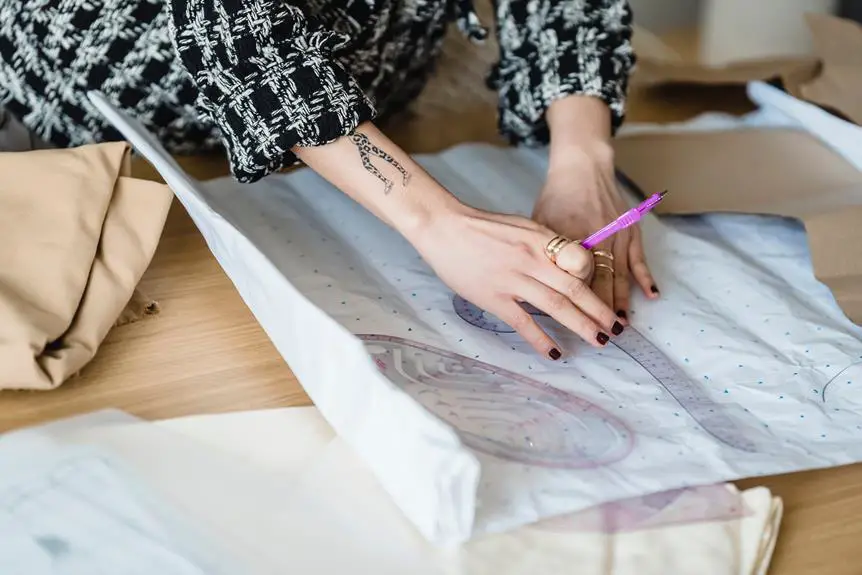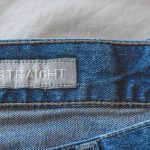Is muslin fabric the ultimate bolt for your sewing projects?
When it comes to mastering the art of sewing, choosing the right fabric is crucial.
Muslin fabric, with its rich history and versatile properties, has become a staple in the world of sewing.
From pattern making to creating mock-ups and perfecting garment fit, muslin has proven to be an indispensable tool for achieving flawless results in your sewing projects.
In this guide, we'll explore the benefits of using muslin fabric, share tips for working with it, and help you choose the right muslin for your specific project.
Whether you're a seasoned seamstress or a beginner looking to enhance your skills, muslin fabric may just be the ultimate bolt you've been searching for.
Key Takeaways
- Muslin fabric has a rich history and was considered a symbol of luxury in ancient India.
- Muslin is highly versatile and beneficial for sewing projects, as it is affordable, lightweight, and easy to work with.
- Muslin fabric is commonly used for creating mock-ups to test and refine designs before using the final fabric.
- Muslin plays a crucial role in perfecting garment fit, allowing for precise adjustments and alterations.
The Origin and History of Muslin Fabric
When you consider the origin and history of muslin fabric, it becomes evident that its roots can be traced back to ancient India. Muslin has a rich history, evolving from a luxurious fabric favored by royalty to a versatile material used in various cultures and industries.
In ancient times, muslin was highly prized for its delicate weave and was considered a symbol of luxury and refinement. It was in great demand across the ancient world, from the Mediterranean to East Asia. The production techniques of muslin were closely guarded secrets, and the fabric held significant cultural and economic importance.
The evolution of muslin fabric is fascinating, as it transitioned from being a symbol of status and wealth to becoming a staple in the fashion and textile industries. Its cultural significance is evident in the various uses across different traditions and ceremonies. The intricate production techniques, including the spinning and weaving processes, contributed to the high quality and fine texture of muslin.
This fabric's journey from ancient India to becoming a global phenomenon showcases its enduring appeal and legacy.
The Versatility of Muslin in Sewing
Muslin fabric is truly versatile when it comes to sewing. You can use it for pattern-making to ensure the perfect fit, and then for garment fitting to make adjustments as needed.
Its adaptability makes it a must-have in any sewing project.
Muslin for Pattern-Making
Using muslin for pattern-making can help you create accurate and versatile templates for your sewing projects. Muslin is an excellent choice for pattern making as it is affordable, easy to work with, and provides a good approximation of the drape and feel of the final fabric. Check out the table below for a comparison of muslin with other common muslin alternatives used in pattern-making.
| Criteria | Muslin | Alternatives |
|---|---|---|
| Affordability | Affordable | Varies |
| Drapability | Mimics final fabric | May not mimic final fabric |
| Durability | Durable | Varies |
When working on a pattern, using muslin allows you to make adjustments and alterations before cutting into your final fabric. This can save time, money, and frustration in the long run.
Muslin for Garment Fitting
To achieve an optimal fit for your garments, consider employing muslin as it allows for precise adjustments and accurate fittings, ultimately saving time and resources in your sewing endeavors.
Muslin's lightweight and breathable fabric properties make it an ideal choice for garment fitting. When creating a muslin prototype of your garment, you can easily pin, mark, and alter the fabric to achieve the perfect fit before cutting into your final fabric.
The versatility of muslin in garment fitting is unmatched; it provides a cost-effective way to test patterns and make necessary adjustments without wasting expensive fabrics. Additionally, muslin's draping abilities allow you to see how the fabric will hang on the body, ensuring a tailored fit.
Embracing muslin for garment fitting empowers you to create well-fitting, professional-looking garments with ease.
Benefits of Using Muslin for Pattern Making
When you use muslin for pattern making, you'll benefit from its versatility and affordability. Muslin fabric, known for its numerous benefits, is an excellent choice for creating patterns due to its unique properties and uses.
Here are some of the advantages of using muslin for pattern making:
- Easy to Work With: Muslin fabric is lightweight and easy to handle, making it ideal for creating and adjusting patterns without added bulk or difficulty.
- Cost-Effective: As compared to other fabrics, muslin is relatively inexpensive, allowing you to create multiple iterations of a pattern without breaking the bank.
- Excellent Drape and Texture: Its natural drape and texture make muslin an ideal choice for accurately testing how a garment will hang and move when made from the final fabric.
- Simple to Mark and Alter: Muslin takes markings well, making it easy to transfer pattern alterations. This simplifies the process of adjusting and perfecting the pattern before cutting into the final fabric.
Muslin Fabric for Creating Mock-ups
Consider using muslin fabric to create mock-ups for your sewing projects, as it allows you to test and refine your designs before cutting into your final fabric. When selecting muslin for mock-up construction, opt for unbleached or white muslin with a medium weight. This fabric choice is ideal because it closely resembles the drape and weight of many garment fabrics. Muslin's natural color also makes it easier to see the fabric's grain and any markings during the mock-up process.
The fabric qualities of muslin, such as its ease of marking, pinning, and sewing, make it perfect for creating mock-ups. Its minimal stretch and stable weave provide a good representation of how your final garment will behave. During mock-up construction, you can easily make alterations and adjustments as needed, allowing you to perfect your design before cutting your expensive fabric. Muslin's affordability also makes it a practical choice for mock-ups, saving your expensive fabric for the final piece.
Muslin's Role in Perfecting Garment Fit
You can use muslin fabric to refine the fit of your garments, allowing for precise adjustments before finalizing your sewing projects. Muslin's role in perfecting garment fit is crucial for achieving the desired outcome.
Here's how muslin fabric helps perfect the fit of your garments:
- Fabric Properties and Advantages: Muslin fabric is lightweight, breathable, and has minimal stretch, making it an ideal choice for creating garment prototypes. Its affordability and availability in a range of widths also make it a practical option for fitting purposes.
- Garment Construction: When using muslin for fitting, you can focus on the construction of the garment without being concerned about the final fabric's drape and texture. This allows you to concentrate solely on achieving the perfect fit before cutting into your fashion fabric.
- Alterations: Muslin makes it easier to mark, pin, and sew alterations. Its neutral color also provides a clear canvas for marking adjustments, ensuring that any changes made are easily visible and adjustable.
- Precision Fitting: Muslin's stability and ease of manipulation enable meticulous adjustments, ensuring that the final garment fits impeccably.
Tips for Working With Muslin Fabric
So, you've decided to work with muslin fabric for your sewing projects. It's a great choice for creating test garments and perfecting the fit before moving on to your final fabric.
There are a few tips and tricks that can help you make the most of this versatile and affordable fabric.
Muslin Fabric Benefits
When working with muslin fabric, focus on its benefits to ensure successful sewing projects. Muslin fabric offers several advantages that make it a fantastic choice for your sewing endeavors.
Here are some key benefits and tips for working with muslin fabric:
- Versatility: Muslin fabric comes in various types, including bleached, unbleached, and dyed, allowing you to choose the best option for your project.
- Test Garments: Its affordability makes muslin fabric perfect for creating test garments to perfect the fit before using your final fabric.
- Easy to Work With: The lightweight and breathable nature of muslin fabric makes it easy to handle, stitch, and press, ensuring a smooth sewing experience.
- Draping and Fitting: Muslin fabric's ability to drape well and hold creases makes it ideal for draping patterns and fitting adjustments.
Sewing Tips for Muslin
For a more seamless sewing experience, consider prewashing your muslin fabric to minimize shrinkage and ensure accurate sizing for your project. When working with muslin fabric, it's important to use the right sewing techniques to achieve the best results. Here are some tips for working with muslin fabric:
| Sewing Tips | Muslin Fabric Alternatives |
|---|---|
| Prewash your muslin fabric before sewing. | Quilting cotton |
| Use a smaller stitch length for stability. | Linen |
| Pin the fabric carefully to prevent shifting. | Voile |
| Press seams open to reduce bulk. | Cotton lawn |
These tips will help you handle muslin fabric effectively. Don't forget to explore alternative fabrics for your projects and ensure proper fabric care for longevity.
Choosing the Right Muslin for Your Project
Before starting your project, ensure that you choose the right muslin for your specific needs. When it comes to selecting muslin for your sewing projects, there are a few key factors to consider to ensure you achieve the best results. Here are some tips to help you choose the right muslin for your project:
- Choosing the Right Weight: Consider the weight of the muslin fabric based on the specific requirements of your project. Lighter weights are suitable for delicate projects and draping, while heavier weights are ideal for more structured garments and home decor items.
- Dyeing Muslin: If you plan to dye the muslin fabric for your project, opt for unbleached or natural muslin. These types of muslin are more receptive to dyes and will result in vibrant, long-lasting colors.
- Using Muslin for Quilting: For quilting projects, look for muslin that's tightly woven and has a smooth texture. This will provide a stable base for your quilting designs and ensure durability.
- Using Muslin for Home Decor: When using muslin for home decor projects such as curtains or tablecloths, choose a muslin fabric that complements the overall aesthetic of the space. Consider factors such as color, weight, and texture to achieve the desired look and functionality.
Frequently Asked Questions
Can Muslin Fabric Be Used for Other Crafts Besides Sewing?
Yes, muslin fabric can be used for a variety of crafts besides sewing. Its crafting versatility makes it ideal for creative projects. You can compare it with other fabrics, explore dyeing and printing, and use it with various project tools.
How Does Muslin Fabric Compare to Other Types of Fabric in Terms of Durability?
When comparing muslin fabric to other types, you'll find its strength and versatility stand out. Its durability makes it a great choice for various projects. It holds up well and offers a wide range of uses.
Are There Any Specific Care Instructions for Washing and Caring for Muslin Fabric?
To care for muslin fabric, machine wash with a gentle detergent, avoid fabric softener to maintain its texture, iron with low heat, and store in a cool, dry place. Following these care instructions will prolong its lifespan.
Can Muslin Fabric Be Dyed or Printed on to Create Custom Designs?
Yes, muslin fabric can be dyed using various techniques such as immersion dyeing, tie-dyeing, or dip-dyeing. It can also be printed on using methods like block printing, screen printing, or digital printing to create custom designs.
Are There Any Specific Techniques or Tools Recommended for Working With Muslin Fabric in Sewing Projects?
When working with muslin fabric in your sewing projects, there are specific techniques and tools that can elevate your results. Utilize sewing techniques like basting and stay-stitching, along with essential sewing tools such as sharp scissors and quality pins.
- Why Is Red Velvet Not Red? - April 25, 2024
- How Do You Describe Velvet Fabric? - April 25, 2024
- How Strong Is Velvet? - April 25, 2024







